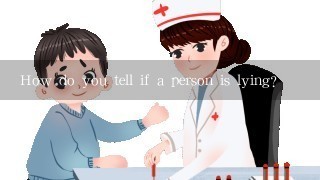How do you tell if a person is lying?

Sure, here are some ways to tell if a person is lying:
Behavioral Clues:
- Lying consistently: A person who consistently lies about small things over time is more likely to lie about larger things.
- Using evasive answers: When a person is asked a question and avoids answering directly, it could be a sign that they are being dishonest.
- Using filler words: A person who uses phrases like "um," "uh," or "like" excessively when speaking could be trying to avoid answering the question.
- Being overly self-assured: A person who is overly confident in their lies is more likely to be lying.
- Using a defensive tone: When a person is asked a question and responds with a defensive tone, it could be a sign that they are being dishonest.
Verbal Clues:
- Lying word choice: A person who uses vague or ambiguous language when answering questions is more likely to be lying.
- Using filler words: A person who uses phrases like "um," "uh," or "like" excessively when speaking could be trying to avoid answering the question.
- Using deceptive tone of voice: A person who speaks in a condescending or patronizing tone could be trying to deflect the question.
- Using circular reasoning: A person who repeats the same set of words or phrases when answering questions is more likely to be lying.
Physical Clues:
- Unease or fidgetiness: A person who is fidgety or nervous when answering questions could be trying to hide their true feelings.
- Eye contact avoidance: A person who avoids eye contact when answering questions could be trying to avoid being caught.
- Slow response time: A person who takes a long time to answer a question could be trying to avoid admitting they don't know the answer.
It's important to note that not all people who lie exhibit all of these behaviors or verbal cues. Additionally, some people who are naturally shy or reserved may be more hesitant to lie than those who are more outgoing.
Ultimately, the best way to tell if someone is lying is to be attentive to their behavior and verbal cues and ask follow-up questions that probe deeper into the situation.





































































